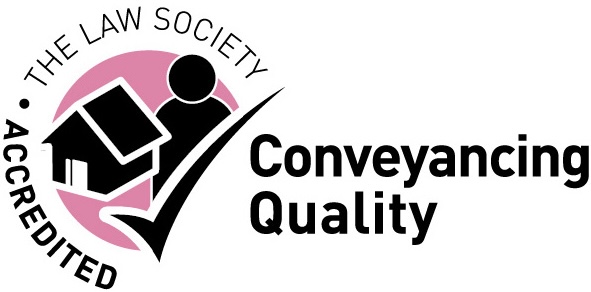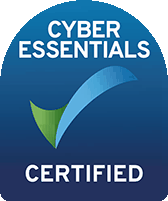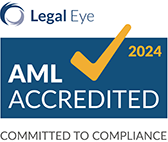Buying a home is one of life’s biggest milestones, but the process can feel daunting with the legal checks, paperwork, and contracts involved. Understanding the role of a conveyancer can make the journey far easier and help you feel more in control from the outset.
In this video, we explain the essential part a conveyancer plays in keeping your transaction moving. From handling the legal work to coordinating communication between everyone involved, they help your purchase progress smoothly and with confidence.
Below, we outline what a conveyancer does when you are buying a home, what they don’t do, and why having clarity on their role can help you avoid delays and unnecessary stress.
What Does a Conveyancer Do?
A conveyancer’s role is to manage the legal steps of buying a property. They protect your interests and make sure everything is handled correctly, from checking ownership to registering your new home with the Land Registry.
Property Ownership Checks
Your conveyancer reviews the property’s title documents to confirm the seller has the legal right to sell. They also flag any restrictions, such as rights of way or covenants, that could affect your use of the property.
Local area searches
Conveyancers order and examine searches, which reveal details about the local area, like planning permissions, flood risks, or road schemes. If any issues arise, your conveyancer raises questions with the seller’s solicitor on your behalf.
Contract Draft and Review
The contract sets out the terms of the purchase. Your conveyancer checks it carefully and explains it in plain English, so you know exactly what you’re agreeing to before you sign.
Ownership Registration
Once your purchase completes, your conveyancer registers you as the legal owner with HM Land Registry. This ensures your name is officially linked to the property, protecting your right to sell or remortgage in the future.
Mortgage and ID Checks
Conveyancers review your mortgage offer to ensure it matches the agreed terms and verifying your identity and source of funds – a legal requirement to prevent money laundering.
Title Protection
Ultimately, a conveyancer aims to provide you with a good, marketable title, meaning you can sell or remortgage the property in future without legal complications.
What a Conveyancer Does Not Do
It’s also as important to understand what a conveyancer does not do:
- Mortgages – They don’t arrange loans. Speak to a mortgage advisor or lender.
- Surveys – They don’t inspect the property for structural issues. A surveyor carries out this work.
- Tax and stamp duty advice – For tailored advice, beyond standard conveyancing calculations, consult an accountant or tax specialist.
- Price negotiations – The estate agent handles offers and negotiations.
Knowing this helps avoid confusion and ensure you involve the right professionals at the right stage. It also helps clarify the solicitor vs conveyancer distinction as both handle the legal side of a property purchase, but neither manages finances or valuations.
Conveyancing Timeline: What Happens at Each Stage When Buying A Home
Every home move follows a series of legal steps, from the moment you instruct a conveyancer to completion day. Conveyancing usually takes around 10-14 weeks, but factors such as a chain or slow search results can mean it can take longer.
Here’s a typical timeline of what happens at each stage of buying your home.
Instruction and Initial Checks (Day 1)
The process begins once you instruct a conveyancer. They’ll open your case, carry out identity and anti-money laundering checks, and confirm details of your mortgage.
Pre-Contract Stage (Weeks 1-5)
At this point, your conveyancer orders local authority, drainage, and environmental searches. They also review the property’s title and raise any questions with the seller’s solicitor. This stage can take a few weeks, depending on how quickly responses come back.
Mortgage Offer and Survey (Weeks 5-7)
If you’re buying a home with a mortgage, the lender will arrange a valuation. You may also commission a survey to check the property’s condition. Your conveyancer ensures your mortgage offer meets the agreed terms so the transaction can progress.
Exchange of Contracts (Weeks 7-9)
Once searches are complete and all enquiries are resolved, both parties sign and exchange contracts. This makes the sale legally binding and confirms a completion date.
f you’d like a deeper look at timelines and what can influence them, read our guide on how long conveyancing takes.
Completion (Typically 1-2 Weeks After Exchange)
On completion day, funds are transferred, keys handed over, and you become the legal owner of the property. Your conveyancer then registers the ownership with HM Land Registry and submits any required Stamp Duty paperwork.
Tips for Making Your Conveyancing Process Smoother
There are ways you can help the conveyancing process to run more smoothly:
- Respond promptly to your conveyancer’s requests
- Provide mortgage and financial details early
- Ask questions if anything is unclear
- Stay in regular contact for updates
These simple actions can help your conveyancer work efficiently, reduce delays, and make your move feel less stressful.
Your conveyancer is there to protect your interests and guide you through the legal steps of buying a home. Understanding the role of a conveyancer when buying a home ensures you know what to expect, you can coordinate smoothly with other professionals, and focus on the exciting part of moving in.
If you are preparing your budget, our guide to average conveyancing fees explains the typical costs involved.
Speak to one of our experienced residential conveyancers today and make your home purchase a stress-free experience. Get an instant online conveyancing quote on our website.
LPL are one of the leading UK residential conveyancing firms!


